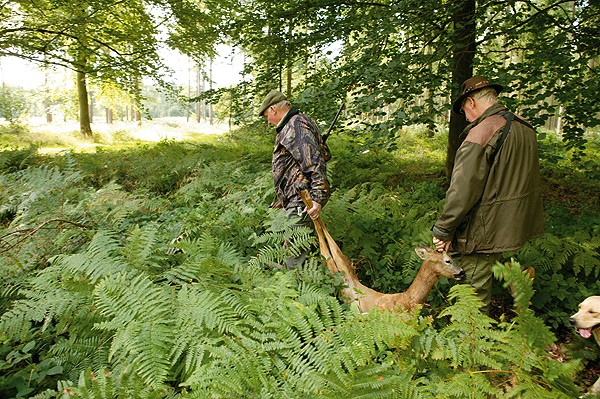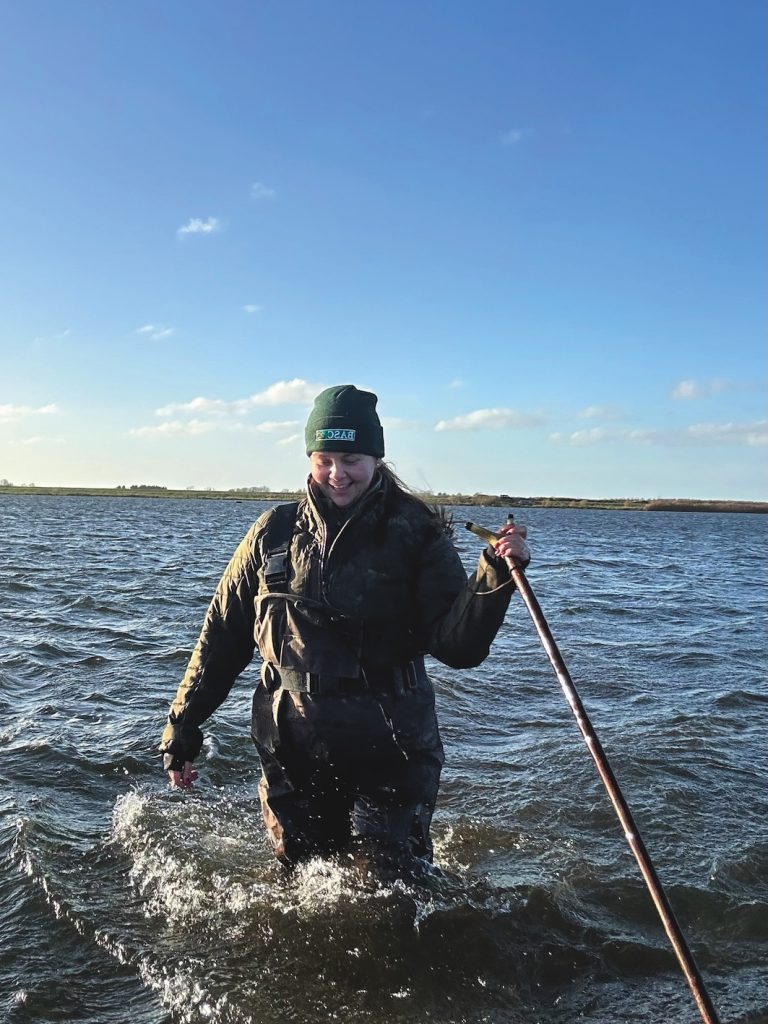Win CENS ProFlex DX5 earplugs worth £1,149 – enter here
A golden summer for roe?
<strong>Stalkers give their views on this year's bucks</strong>

Not many commentators viewed 2011 as a vintage year for roe trophies, even though some strong trophies were obtained. While some attributed the drop in quality to the age profile of the animals stalked, others blamed the dire weather.
Last winter brought different weather patterns than either of the preceding two. The snow and prolonged periods of cold in 2009 and 2010 have been replaced with threats of water restrictions in the South East and drier weather in general. While weather maps have shown persistent precipitation over the far north-west of Scotland, cold has not really been an issue.
The accepted view has been that mild, dry winters favour good antler growth, while cold, wet weather has a depressing effect on antler development. In the past, it was suggested that very cold weather in the early part of the growing cycle checked the developing antler because body resources were diverted to ensure survival. This may or may not be the case.
What is clear is that deer do not do well in long periods of wet weather. Their body condition is sapped and they become vulnerable to debilitating ailments as winter gives way to spring. Traditionally, more high-quality roebuck are harvested by UK-based stalkers in the early part of the season than at any other time during the open season. There are several likely reasons for this.
First, a stalker?s determination to succeed often means they target bucks they have observed during the growing period. Second, seasonal movement patterns of resident groups of roe can result in mature animals continuing to consort with other deer, which can make them more susceptible to stalking. And third, the groundcover, or lack of it, at this time of the year makes it easier to see roe, both in woodland and on field edges.
Certainly, north of the Border it has been the case that most medal-class trophies are accounted for in the first two weeks of April; it will be interesting to see whether this pattern is repeated on a countrywide basis in the future.
Looking for predictions for 2012, I canvassed experienced professional stalkers from south to north for their observations of their resident bucks, and the issues they see as important.
The outlook ahead
While a generally positive picture emerged, there were reports of some young does in poor bodily condition, with scours, in the south-east of England. Those who encountered the animals thought that they may have been affected by a significant parasitic burden.
Overall, however, from central Scotland to East Anglia, resident deer were reported to be visible, in good heart, and where they should be. Trophy quality was reported as encouraging, particularly in eastern and southern counties of England, with some good bucks seen in Oxfordshire.
In the north, things appear to be more variable. In Fife, the heartland of Scottish roe stalking, there were fewer reports of early clean bucks. Only one was seen in February, but by mid-March they were turning up in expected numbers. The picture in north-east England was of good numbers of roe having come through the winter.
Stalkers can get quite animated over the early shedding of velvet and its implications. For the trophy hunter, the sight of a mature animal clean of velvet in February is seen as a good omen for providing a well-coloured trophy in the first week of the open season.
This year it seems that completely clean bucks have been recorded from the south to the north as early as 24 February. Interestingly, most reports came from the east of the UK; correspondents from the west did not record any fully clean animals by the end of the third week in March, but saw some animals with clean tips. Some observers reported relatively young animals with clean heads, which may point to a shortened growing period. I wonder if reports of these early clean bucks reflect a change in the roe population?s dynamic or point to the huge increase in roe enthusiasts who now actively observe and report their findings.
A change in the law
Scottish stalkers and others who operate in Scotland need to be aware of important changes introduced by the 2011 Wildlife and Natural Environment (Scotland) Act. In essence, part of this act removes the rights of occupiers to cull deer out of season that are, or are likely to, cause damage.
Where such damage occurs, from 1 April 2012 a general licence must be obtained to cull male deer. But this licence will not permit the killing of female deer between 1 April and 31 August. If damage occurs in this period, the occupier has to apply to Scottish Natural Heritage for authorisation to kill those female deer that are causing, or are likely to cause, damage. For more information on this change, visit www.snh.gov.uk. Stalkers should take the time to familiarise themselves with it.
Schmallenberg virus
The talk of Schmallenberg virus appearing in deer has been circulating in the stalking community after it appeared in cattle in the Netherlands and Germany in the late summer and early autumn of 2011. Infected animals subsequently gave birth, with difficulty, to deformed offspring.
The virus has now appeared in sheep in the UK, though the number of flocks affected is reportedly small. It is not known if the virus will affect deer, but stalkers should be vigilant as kidding and calving approaches ? clearly its appearance could have significant welfare issues for the deer population.
Technological advances
It?s interesting how technology now influences stalking. Increasing numbers of deer managers seem to favour the use of stealth cameras to assess their resident deer and familiarise themselves with territorial boundaries. These cameras allow you to see your deer, and can provide an accurate record of date and time. But let?s hope that all of us who use this technology maintain a proper sporting ethic when it comes to deploying it, and that at all times fair chase and ethical stalking remains a priority!
Whatever the changes and challenges, the new season looks encouraging and it will hopefully bring the chance of the buck you?ve always wanted.
Related Articles
Get the latest news delivered direct to your door
Subscribe to Shooting Times & Country
Discover the ultimate companion for field sports enthusiasts with Shooting Times & Country Magazine, the UK’s leading weekly publication that has been at the forefront of shooting culture since 1882. Subscribers gain access to expert tips, comprehensive gear reviews, seasonal advice and a vibrant community of like-minded shooters.
Save on shop price when you subscribe with weekly issues featuring in-depth articles on gundog training, exclusive member offers and access to the digital back issue library. A Shooting Times & Country subscription is more than a magazine, don’t just read about the countryside; immerse yourself in its most authoritative and engaging publication.







